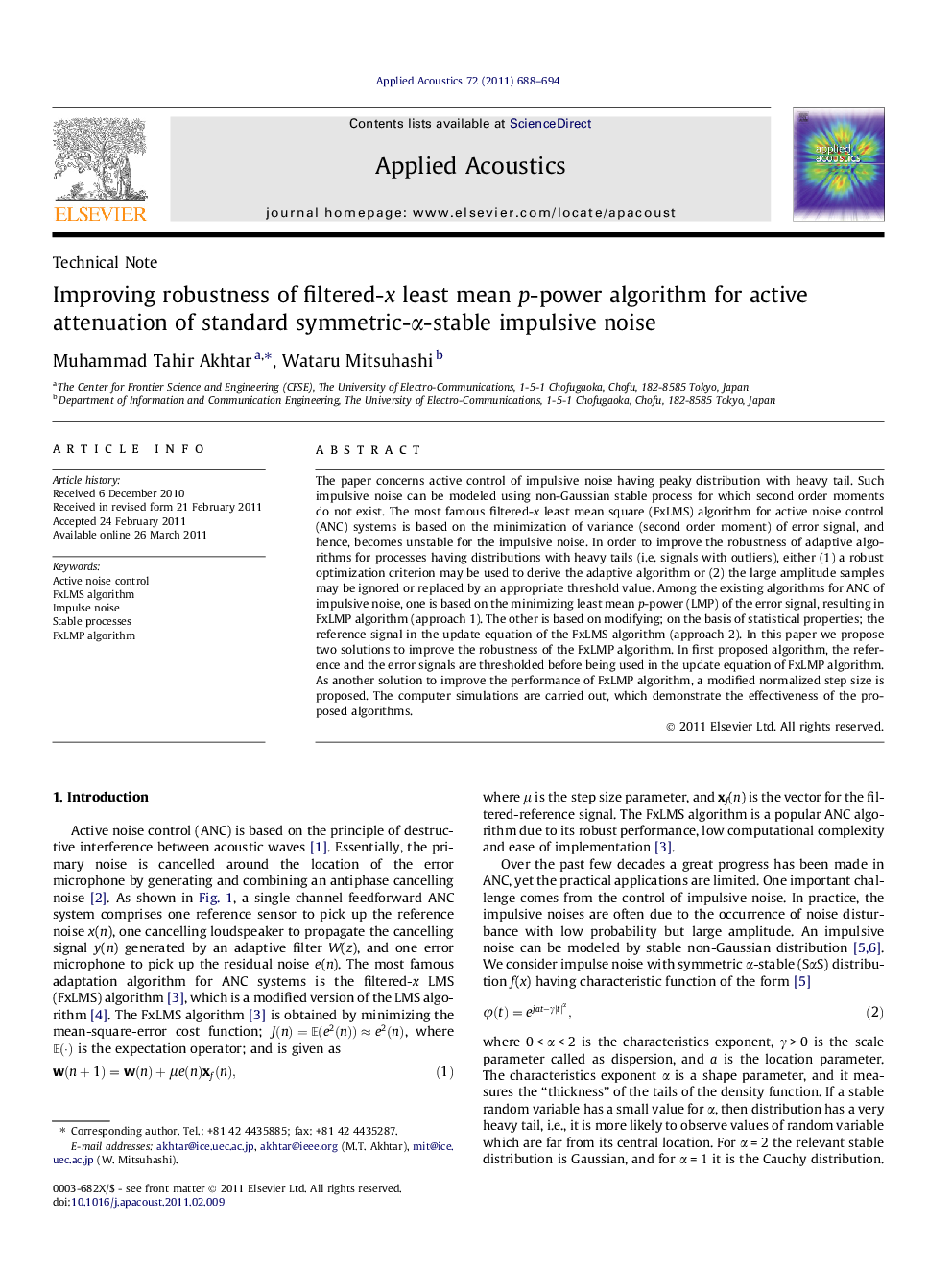| کد مقاله | کد نشریه | سال انتشار | مقاله انگلیسی | نسخه تمام متن |
|---|---|---|---|---|
| 754486 | 895857 | 2011 | 7 صفحه PDF | دانلود رایگان |

The paper concerns active control of impulsive noise having peaky distribution with heavy tail. Such impulsive noise can be modeled using non-Gaussian stable process for which second order moments do not exist. The most famous filtered-x least mean square (FxLMS) algorithm for active noise control (ANC) systems is based on the minimization of variance (second order moment) of error signal, and hence, becomes unstable for the impulsive noise. In order to improve the robustness of adaptive algorithms for processes having distributions with heavy tails (i.e. signals with outliers), either (1) a robust optimization criterion may be used to derive the adaptive algorithm or (2) the large amplitude samples may be ignored or replaced by an appropriate threshold value. Among the existing algorithms for ANC of impulsive noise, one is based on the minimizing least mean p-power (LMP) of the error signal, resulting in FxLMP algorithm (approach 1). The other is based on modifying; on the basis of statistical properties; the reference signal in the update equation of the FxLMS algorithm (approach 2). In this paper we propose two solutions to improve the robustness of the FxLMP algorithm. In first proposed algorithm, the reference and the error signals are thresholded before being used in the update equation of FxLMP algorithm. As another solution to improve the performance of FxLMP algorithm, a modified normalized step size is proposed. The computer simulations are carried out, which demonstrate the effectiveness of the proposed algorithms.
► The FxLMS algorithm becomes unstable for ANC of impulsive noise sources.
► An appropriate choice is FxLMP algorithm; however, its performance is very poor.
► We suggest two modified versions of the FxLMP algorithm.
► Extensive computer simulations demonstrate effectiveness of the proposed algorithms.
Journal: Applied Acoustics - Volume 72, Issue 9, September 2011, Pages 688–694